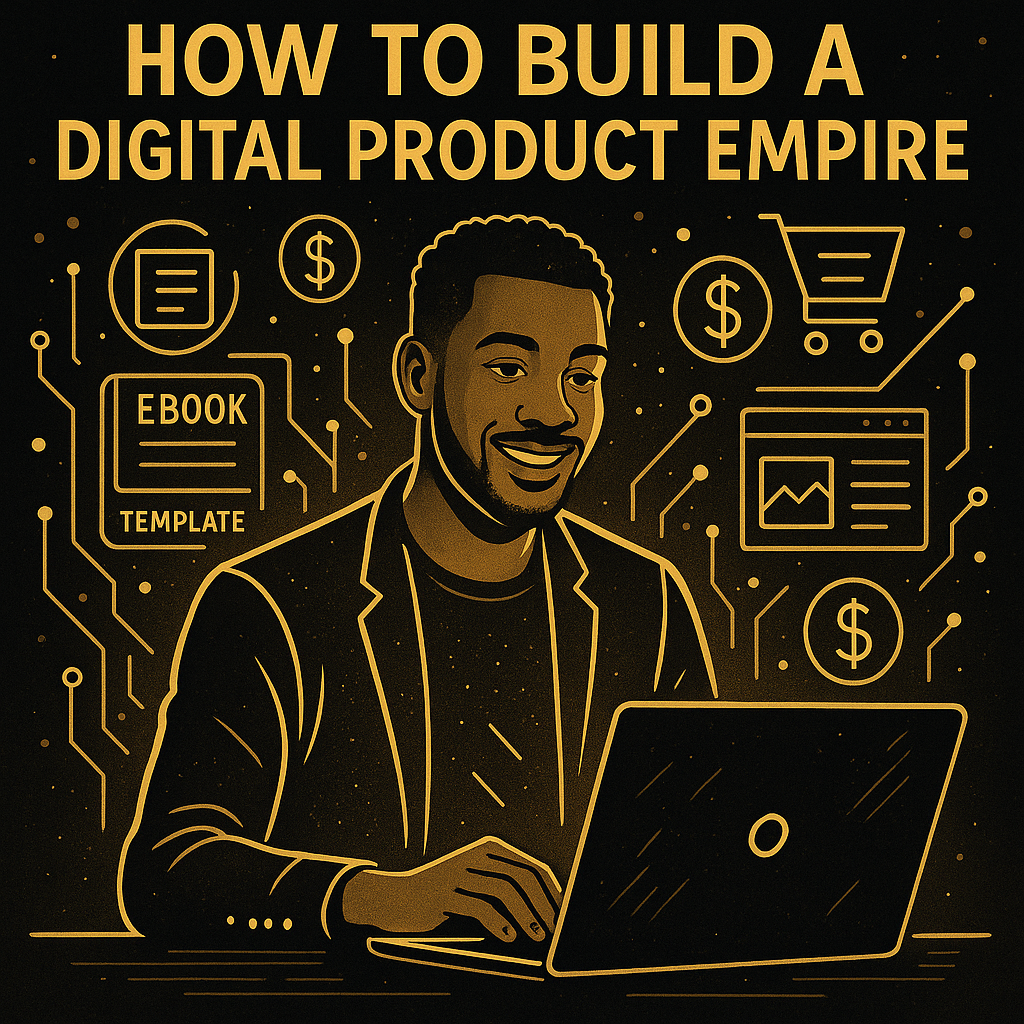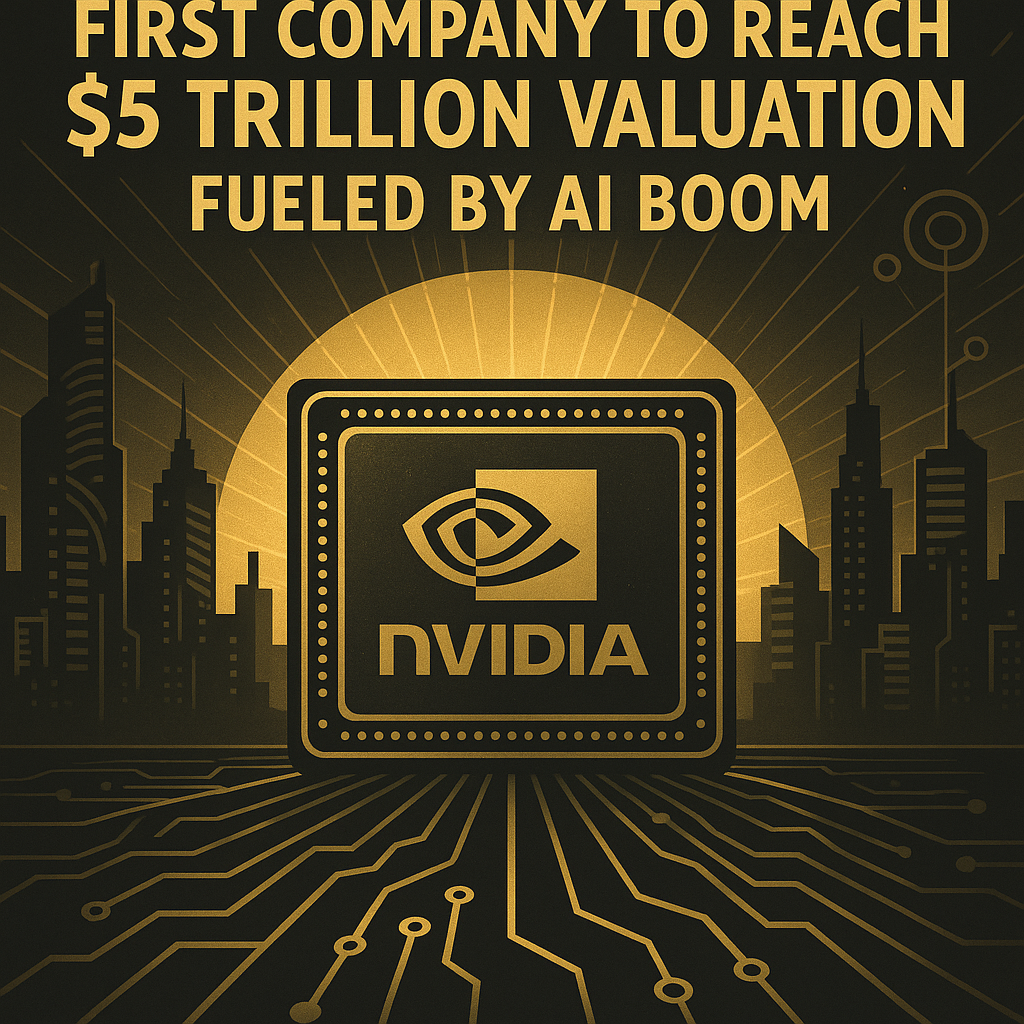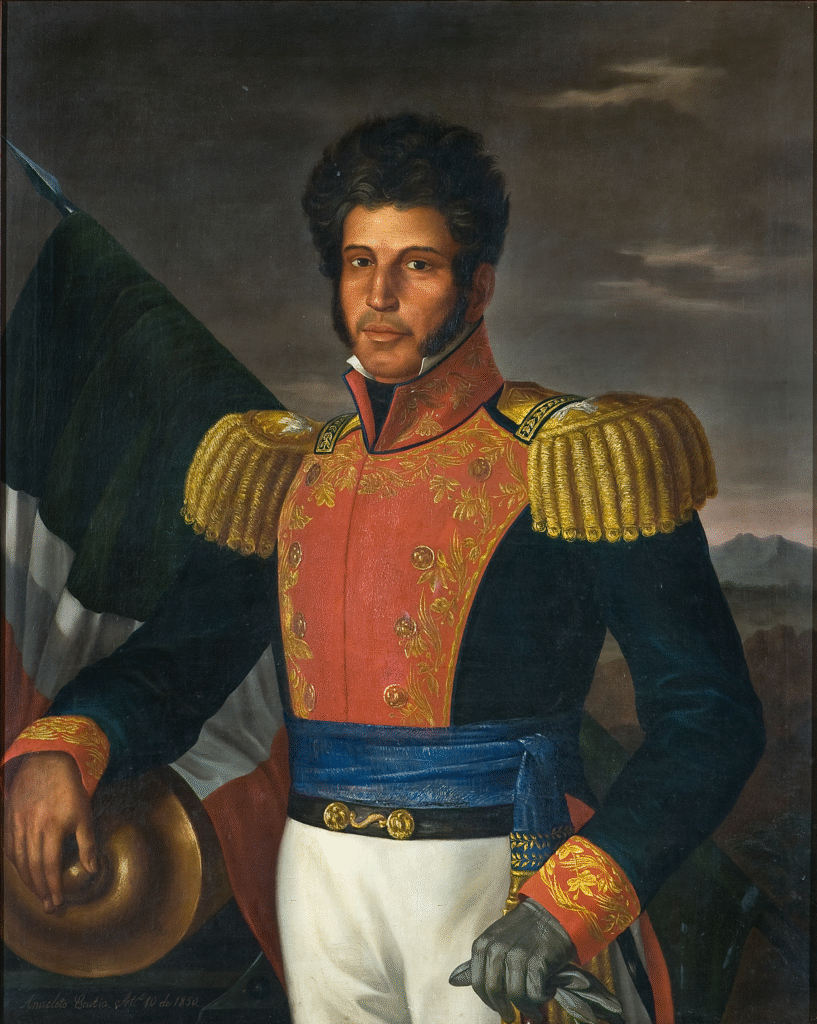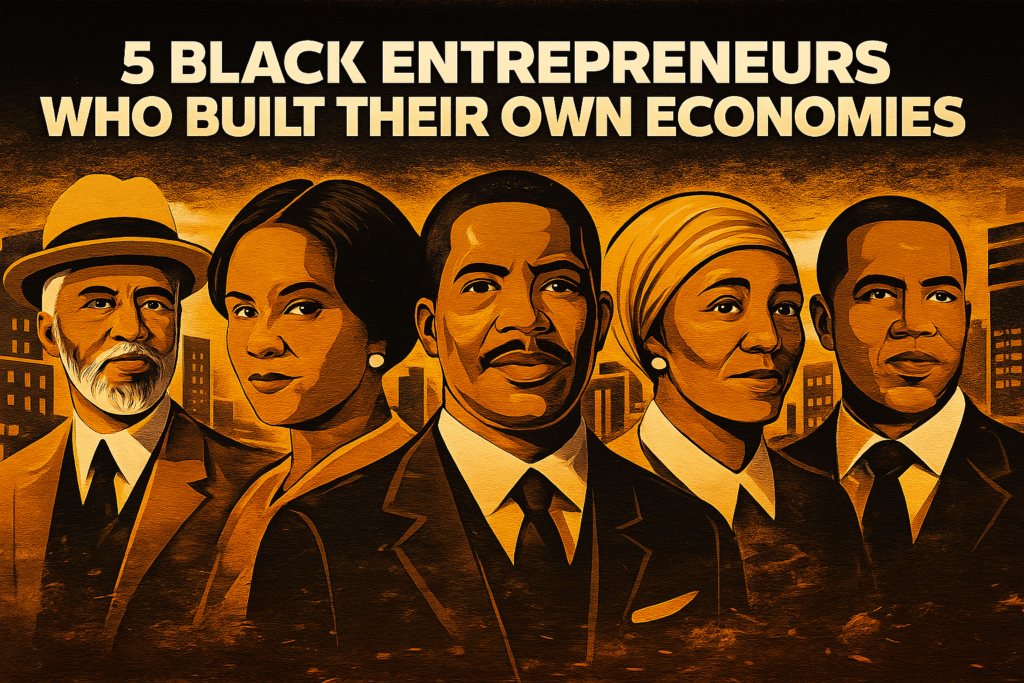What Rosewood Can Teach Us About Real Estate and Rebuilding Legacy

Word Count: ~1,250 There’s a small town that history tried to erase.A place that once stood as proof that Black ownership wasn’t a dream — it was a reality. That place was Rosewood, Florida. Before the flames and violence of 1923, Rosewood was a thriving, self-sustained Black community.Families owned land, ran businesses, and built wealth in peace — until jealousy and racism destroyed it all. But what they built — and what we can learn from it — still matters today. Because Rosewood wasn’t just a town. It was a template. 1. Ownership Was Their Foundation At the start of the 1900s, Rosewood was filled with Black-owned homes, farms, and businesses.Families owned hundreds of acres of land.They didn’t wait for handouts or equality — they bought freedom, acre by acre. That’s the first lesson Rosewood teaches us: You can’t build wealth on borrowed ground. Ownership is security.It’s the difference between surviving and establishing legacy. They knew that whoever owns the land controls the narrative. 2. Real Estate Was Power, Not Just Property In Rosewood, property wasn’t about status — it was about stability. That land gave Black families independence.They farmed it, built on it, and passed it down. They didn’t need approval from the outside world because they had what most people still dream of today — self-sufficiency. In today’s world of mortgages, Airbnbs, and high rent, the same rule applies: Land is still the greatest equalizer. 3. They Built Generational Systems Before the Term Existed The families of Rosewood weren’t just surviving — they were strategizing. Land was passed through generations.Businesses supported each other.Money circulated locally, feeding an ecosystem of teachers, farmers, and tradesmen. That’s the model we’ve drifted from — but can rebuild digitally and physically today. Ownership wasn’t a flex. It was a plan. 4. The Tragedy That Tried to Erase Wealth In January 1923, a lie — fueled by racism and hate — ignited violence that destroyed everything. Homes were burned. Land was stolen. Lives were taken.The wealth, the property, the inheritance — gone. And to make it worse, no one was held accountable.Rosewood’s families never received compensation until 1994, when Florida finally acknowledged the massacre. The message is haunting but clear: When we don’t protect what we own, history can repeat itself. That’s why legal protection — through trusts, insurance, and documentation — isn’t optional. It’s survival. 5. Protecting the Legacy: Modern Lessons from Rosewood Here’s what Rosewood teaches every Black family and entrepreneur in 2025: Rosewood’s story reminds us that wealth isn’t just built — it must be protected. 6. Rebuilding Rosewood Through Modern Real Estate The new “Rosewood” doesn’t have to be a small Florida town — it can be every community we rebuild. Today, real estate ownership looks different. It’s: Every plot of land, every business, every digital asset can be a piece of a modern Rosewood. The goal isn’t to rebuild what was lost — it’s to build something that can’t be burned again. 7. The Power of Remembering Rosewood’s pain is part of our collective memory — but so is its power. Every home we buy, every property we invest in, every legacy we protect — that’s justice. That’s how we turn tragedy into triumph. Because even when they tried to destroy Rosewood’s land, they couldn’t destroy the lesson it left behind: Land equals leverage. Ownership equals power. Legacy equals protection. Final Word: We Are the New Rosewood We don’t honor Rosewood by just remembering it.We honor it by rebuilding what it stood for. In every city, there’s a block waiting to be bought.A neighborhood waiting to be revived.A generation waiting to inherit structure, not struggle. Rosewood showed us what happens when we build — and what happens when we stop protecting what we’ve built. So let’s make sure our legacy doesn’t need rescuing — it just needs recording. Because the next Rosewood won’t be erased.It’ll be documented, digitized, and defended — forever. #Rosewood #BlackHistory #RealEstateInvesting #BlackDollarAndCulture #GenerationalWealth
How to Build a Digital Product Empire

Picture this: You’re asleep, your phone’s on silent, and cha-ching! — a sale notification pops up.That’s not a dream — that’s digital product wealth. We’re living in an age where you can turn your knowledge, creativity, and culture into cash — no warehouse, no shipping, no gatekeepers. And while most people are waiting for a “perfect time” to start, others are already building digital empires that never close. Let’s break down how to build one — step by step — so your ideas start working for you 24/7. 1. Understand What a Digital Product Empire Really Is A digital empire isn’t just a few PDFs or an eBook. It’s a system — a network of products that build on each other, educate, and scale automatically. Think of it like this: Your empire = content that teaches, tools that solve problems, and systems that sell themselves. You’re not just selling files — you’re selling freedom. That’s the power of the digital age: you can be the creator, publisher, and distributor — all from your phone. 2. Find Your “Freedom Niche” Before you create, you’ve got to know who you’re serving.Ask yourself: That’s your niche — your sweet spot where passion meets profit. Whether it’s finance, beauty, parenting, fitness, or culture, the internet rewards clarity. 3. Start Small — But Think Big You don’t need a team or fancy software to start. You just need one good idea and the courage to share it. Start with one product: Then, build momentum. Every sale funds your next move. Remember: Walmart started with one store. Your empire starts with one file. 4. Build Your Digital Storefront If your product is the body, your website is the heartbeat. Set up shop with: Use your website as your digital headquarters — where content, trust, and income all connect. Pro tip: Invest in clean visuals, clear copy, and call-to-actions that pop. A great design sells before you even speak. 5. Automate the Empire Here’s where the magic happens: automation. Use tools to work for you: When you automate, your time becomes your greatest asset. Because your goal isn’t just income — it’s freedom. 6. Turn Customers into a Community Anyone can sell a product. Few can build a movement. Your empire grows when you turn buyers into believers.Host webinars, drop game on social media, and tell your story.People don’t just buy products — they buy purpose. When your brand speaks to culture, legacy, and impact — your community will build itself. 7. Reinvest Like a Boss Once your first wave of sales hits, don’t splurge — strategize. Reinvest into: Treat your empire like a business, not a hustle.Because hustles fade — but systems scale. 8. Make It Bigger Than Money Your digital empire isn’t just about profit — it’s about purpose. It’s about showing your family, your community, and your culture that wealth can be built digitally, not just physically. The same way our ancestors built towns and businesses brick by brick — we’re building digital legacies click by click. You’re not just making money online.You’re rewriting what ownership looks like in the modern world. Final Word: Your Empire Starts With a File Stop waiting for perfect timing — the internet doesn’t wait for anyone. Start now.Create something small.Launch, learn, and expand. Because in the digital age, every download is a doorway — to freedom, impact, and legacy. And the empire you’re dreaming about?It’s already in your hands — literally. #DigitalProducts #OnlineBusiness #BlackDollarAndCulture #PassiveIncome #GenerationalWealth
Why Every Family Needs a Trust — Not Just the Rich

Let’s clear up a lie that’s been holding families back for generations:Trusts aren’t just for the wealthy — they’re how people become wealthy. When you hear the word “trust,” you probably picture old money, mansions, and names like Rockefeller or Vanderbilt. But here’s the truth:A trust isn’t a luxury — it’s a strategy.And in 2025, not having one might be the most expensive mistake your family ever makes. 1. Wills vs. Trusts: The Game They Don’t Explain Most families stop at a will — and that’s fine until it’s not. A will says who gets your assets when you die.A trust says how, when, and under what conditions they get it — all while skipping court, saving taxes, and keeping your business private. Wills go through probate, which can take months or years.Trusts go straight to your family — quietly, efficiently, and tax-free. The wealthy don’t wait for probate court — they pass power through paperwork. 2. What a Trust Really Does Here’s what a trust can do for any family: Think of it as your family constitution — a legal document that keeps your values, money, and mission alive long after you’re gone. 3. Why the Rich Use Trusts (and You Should Too) The ultra-wealthy don’t hide money under mattresses — they hide it inside trusts.They know that owning things in your name is risky. When your assets are inside a trust, you technically don’t own them anymore — your trust does.That means creditors, taxes, and even lawsuits can’t touch them. This is why millionaires can file bankruptcy but still keep mansions, cars, and land.Because ownership is an illusion — control is the real flex. 4. How to Set Up a Trust (Without a Million-Dollar Lawyer) Setting up a trust isn’t complicated anymore. Here’s how to start: Once it’s set up, your family has a private financial fortress. 5. The Biggest Lie: “I Don’t Have Enough for a Trust” This one hurts — because it’s how generational wealth keeps skipping our community. You don’t need millions to justify a trust.You need intention. If you own a home, have kids, or even a small life insurance policy — you have enough to protect. Trusts aren’t just for rich families — they’re for smart families. The goal isn’t to die rich. It’s to make sure your family doesn’t start over. 6. The Black Wealth Connection Let’s be honest — we’ve built wealth before.From Tulsa’s Greenwood District to Harlem’s Renaissance, we’ve shown the world what ownership looks like. But too many of those empires died with their founders because there was no structure to carry it forward. A trust ensures our brilliance doesn’t end — it multiplies. Imagine every Black family having a trust that funds education, businesses, and land ownership.That’s not a dream — that’s the next revolution. 7. The Future of Legacy: Your Last Name as a Brand Your trust is more than paperwork — it’s a family business plan. It says, “We’re not waiting for wealth; we’re engineering it.”Your trust becomes the vault that funds generations of dreamers, doers, and builders. Because the truth is, wealth isn’t what you leave behind — it’s what you set in motion. Final Word: Make Your Family the Institution In the end, this isn’t about money — it’s about power. We’ve been taught to work for companies with trusts and endowments while never building our own.But the moment you create a trust, your family becomes its own institution. No middlemen. No handouts. Just legacy. You don’t need to be rich to start a trust. You just need to be tired of starting over. #FamilyTrust #GenerationalWealth #BlackDollarAndCulture #FinancialFreedom #LegacyBuilding

Nvidia Becomes the First Company to Hit $5 Trillion — Fueled by the AI Boom Let’s talk about the moment when tech history officially turned into a money marathon. The year is 2025, and Nvidia just sprinted past every other company on the planet to become the first to hit a $5 trillion valuation. Not Apple. Not Microsoft. Not Amazon.The new heavyweight champion of the financial world?A company that started making video game graphics — and ended up powering the brains of artificial intelligence. So how did Nvidia go from pixels to power moves? Let’s break it down. 1. From Gaming Chips to Global Domination Nvidia began in 1993 making GPUs — graphic processing units — so gamers could see smoother explosions and faster dragons.But those same chips turned out to be perfect for teaching AI how to think. Fast-forward three decades, and Nvidia’s chips are in everything from self-driving cars to ChatGPT-style systems — the hardware behind the entire AI revolution. You know how oil fueled the 1900s?Chips are the oil of the digital age.And Nvidia owns the refinery. 2. The AI Gold Rush — and Nvidia Sold the Shovels Here’s the genius: Nvidia isn’t selling AI apps — it’s selling the tools that make AI possible. Every startup, corporation, or researcher building AI models needs Nvidia’s chips.That means whether AI wins or loses, Nvidia still gets paid. When everyone’s digging for gold, the smart play is to sell the shovels. That strategy pushed Nvidia to record-breaking profits — and made its CEO, Jensen Huang, the most influential man in tech you’ve probably never met. 3. The Numbers Are Just Insane Let’s get real — $5 trillion is not just a number. It’s an era. Every major AI company — from OpenAI to Tesla — runs on Nvidia chips. If data is the new gold, Nvidia is Fort Knox. 4. What This Means for Everyday Investors If you own Nvidia stock — congratulations, you’re eating good. 🍽️ But for everyone else, this moment is more than headlines — it’s a wake-up call. The next generation of wealth is being built on AI infrastructure, not just ideas.That means the smartest investors aren’t chasing apps — they’re investing in the ecosystem that AI runs on. Think data centers, chipmakers, renewable energy, and automation companies. Don’t just use AI — own a piece of the companies that make it possible. 5. The Ripple Effect on the Black Business Community So what does this mean for us — the creators, entrepreneurs, and innovators in the Black community? It means opportunity.Because AI isn’t just replacing jobs — it’s creating new industries. Black-owned tech startups, content creators, and financial educators can leverage AI tools to scale faster and smarter.AI doesn’t care where you’re from — it rewards who’s prepared. If Nvidia can turn chips into trillions, imagine what happens when we turn culture into code. 6. The Future of AI Wealth Let’s be real — this $5 trillion milestone is just the beginning. We’re entering the “AI Wealth Era” — where entire industries will be rebuilt around data and automation. Education, healthcare, transportation, and finance are all on the verge of transformation.The question isn’t whether AI will dominate — it’s whether we will participate. The next Black Wall Street won’t be brick and mortar — it’ll be digital.And AI is the blueprint. Final Word: Don’t Watch History — Build From It Nvidia’s rise isn’t luck. It’s preparation meeting innovation.They didn’t just adapt to the AI boom — they powered it. That’s the lesson: If you can predict the wave, you don’t need to chase it — you can ride it. As AI reshapes the economy, this is our cue to learn, invest, and innovate.Because the next trillion-dollar idea might not come from Silicon Valley — it might come from someone reading this article right now. #AIBoom #Nvidia #FutureWealth #BlackDollarAndCulture #TechRevolution
The Truth About AI and the Future of Black Business: Building Future Wealth

The year is 2025, and artificial intelligence isn’t coming — it’s already here.It’s in your phone, your favorite store’s checkout, your car, your job, and maybe even your competition. AI is changing how we live, learn, and earn. But here’s the million-dollar question: 👉 Will Black businesses be left behind — or will we use AI to build the next Black Wall Street of the digital age? Let’s break down the truth, the threat, and the opportunity behind AI and the future of Black wealth. 1. The AI Revolution Is the New Industrial Revolution Back in the 1900s, it was oil, railroads, and steel.Today, it’s data, automation, and algorithms. AI is automating everything — from customer service and content creation to investing and logistics.And while some are nervous about job losses, others are quietly using AI to create empires. If you can teach a machine to work, you can free yourself to own.And that’s the mindset shift we need. The people who own the technology will own the future economy. 2. The Hidden Threat: Automation Without Inclusion Let’s be real — AI doesn’t discriminate, but the systems built around it often do. If Black entrepreneurs don’t get involved now, the wealth gap could widen faster than ever.AI will replace repetitive jobs first — the same jobs where many of us start our businesses or careers. That’s why we can’t just use AI; we have to create with it.Build apps. Train AI models. Use data that represents our communities. Otherwise, we’ll be living in a world coded without our voice. 3. The Opportunity: Ownership Over Obedience AI can write business plans, generate content, manage social media, handle accounting, and analyze markets — all for free or at a fraction of the cost. That means the playing field just leveled for every hustler with Wi-Fi. The same way TikTok made anyone a content creator, AI can make anyone a business owner. Imagine automating your marketing, building your website, and analyzing your sales — while you sleep. We’re not competing with robots — we’re collaborating with them. 4. Building Future Wealth with AI Here’s how Black entrepreneurs can use AI right now: AI is the new employee who never sleeps, never complains, and never asks for overtime. 5. The Power of Community in a Digital World When we think of “community,” we picture block parties and barbershops.But in the AI era, community is data. It’s your audience, your followers, your customers — the people who trust your voice. If we unite digitally like our ancestors did physically, we can create our own algorithms.AI trained on our culture, our values, our stories. That’s not just diversity — that’s digital empowerment. 6. The Black Business Playbook for the AI Era If you want to thrive in the new economy, adopt this mindset: The future belongs to those who combine creativity with code. 7. The Future of Black Wealth Is Digital Ownership We once built wealth through land and labor.Now, it’s built through code and content. AI will either be the great equalizer or the great divider — and which one it becomes depends on how we respond today. Black businesses can use AI not to replace people but to amplify power. The goal isn’t to keep up with technology — it’s to make technology keep up with us. Final Word: We Are the Architects of the Future The truth about AI isn’t that it’s taking over — it’s that it’s handing over opportunity to those who dare to grab it. Our ancestors built from nothing.We’re building from knowledge. This is our time to shape the future — to make sure the next era of wealth doesn’t skip our people, our culture, or our legacy. So the question isn’t, “Will AI replace us?”The real question is:Will we use AI to replace the limits we’ve been living under? #AIandBlackBusiness #FutureWealth #BlackEntrepreneurs #BlackDollarAndCulture #DigitalOwnership
The Forgotten Black President Who Ended Slavery in Mexico: Vicente Guerrero

He ended slavery in Mexico — and they never taught you his name. 🕰️ The Untold Story of Vicente Guerrero Long before Abraham Lincoln signed the Emancipation Proclamation, a man of African and Indigenous descent changed the course of history in Mexico. His name was Vicente Ramón Guerrero, and in 1829, he became the second president of Mexico — and the first of Afro-Mexican heritage. Born in Tixtla, Mexico, in 1782, Guerrero was the son of a mule driver. He grew up in poverty but carried a spirit that no empire could break. When the Mexican War of Independence erupted in 1810, Guerrero joined the revolutionaries fighting to end Spanish rule. While others gave up or surrendered, Guerrero refused. His rallying cry — “Mi patria es primero” (My homeland comes first) — became a symbol of resistance and freedom. ✊🏾 From Freedom Fighter to President After years of battle, Mexico gained its independence in 1821. Guerrero emerged as a national hero, respected for his loyalty to the people. By 1829, he rose to the highest office in the land — President of Mexico — a monumental achievement for a man of mixed African and Indigenous heritage during an era of deep racial inequality. But Guerrero wasn’t interested in power — he was driven by justice.One of his first acts as president was to abolish slavery throughout Mexico. This was over 30 years before Lincoln, and decades before most of the world followed. With one decree, Guerrero freed countless enslaved people and forever changed the social fabric of his country. Betrayal and Execution Guerrero’s presidency was short-lived. His progressive reforms angered wealthy elites and colonial loyalists who wanted to preserve power. His own vice president, Anastasio Bustamante, led a coup to remove him from office. In 1831, Guerrero was captured, put through a sham trial, and executed by firing squad. Yet even in death, he remained a symbol of courage and equality. The Mexican state of Guerrero now bears his name — a tribute to the man who dared to defy oppression and uplift humanity. Why Vicente Guerrero’s Legacy Matters Today Guerrero’s story reminds us that Black history is world history.He stands among global freedom fighters who fought for justice, equality, and self-determination — long before it became fashionable. For the Black diaspora, his life challenges us to look beyond borders and recognize how deeply our struggles and victories are intertwined. Guerrero showed what happens when a man from humble beginnings uses his power for the people — not profit. In today’s world, where automation, greed, and inequality are growing again, his spirit is a call to action:Lead with courage. Build with unity. Protect your people. 🖤 The Legacy Lives On Vicente Guerrero was more than a president — he was proof that greatness can rise from any background.He showed the world that freedom has no color, and equality has no border. Let’s keep his name alive.Let’s keep his mission alive.Because when we honor our ancestors, we invest in our own legacy.
How to Turn $100 into a Wealth Machine (Actionable Finance for Beginners)

Most people think you need thousands to start building wealth — but what if I told you $100 is all it takes to start your journey toward financial freedom? The difference between staying broke and building wealth isn’t luck — it’s strategy. In this post, we’ll walk you through actionable ways to turn a single $100 bill into a long-term wealth machine that grows quietly in the background while you sleep. 🧠 1. Shift Your Mindset from Spending to Investing The first step to wealth isn’t about money — it’s about mindset. Most people see $100 as something to spend. Wealth builders see it as something to plant.When you start viewing every dollar as a worker that should be earning more dollars, you’ve already separated yourself from 90% of the population. Try this: instead of spending your next $100 on clothes or takeout, ask, “How can this $100 make me $5 every month?” That small shift creates a ripple effect that leads to long-term change. 📈 2. Choose Your Wealth Vehicle Wisely You don’t need a fancy degree or thousands in capital to start investing — you just need direction. Here are three proven ways to start with $100: The key is to get your money working. The earlier you start, the more time compound growth has to multiply your effort. 🔁 3. Use the “Flip & Reinvest” Cycle Here’s how to make small money turn into big money: This method allows your wealth to snowball safely while you still keep some profits. Consistency is the true secret weapon of wealth. 🏦 4. Automate Your Financial Growth Automation is the hidden power move the wealthy use every day. Set your apps or bank account to automatically move $10–$25 weekly into investments.By removing emotion from the process, you’ll build wealth even on days you forget to think about it. Automation + Consistency = Financial Freedom. 🔒 5. Protect and Multiply Once you’ve built a habit, focus on protection. Then, use your growing profits to fund new opportunities — from stocks and crypto to digital businesses or even family trust systems. That’s how small money becomes generational power. ✊🏾 Final Thoughts: It’s Not the Amount — It’s the System Wealth doesn’t start with a million dollars. It starts with $100 — and the discipline to repeat smart moves over time. When you control your habits, your money follows. Start today, not tomorrow. Because the $100 you save now could become the $10,000 your kids thank you for later. WealthMachine #BlackDollarAndCulture #GenerationalWealth #FinancialFreedom #InvestingForBeginners #CompoundInterest #SmartMoneyMoves #FinancialLiteracy #WealthBuilding #ActionableFinance
Black Entrepreneurs Who Built Their Own Economies

Picture a world where your last name is your business card.Where your ideas, not your zip code, decide your destiny.That’s exactly what these five Black entrepreneurs did — they didn’t just build wealth, they built economies. Each one created a system so powerful that their communities thrived long after they were gone.Let’s step into their stories — and learn the blueprints hidden in their brilliance. 1. O.W. Gurley – The Visionary Behind Black Wall Street Before there was Silicon Valley, there was Greenwood.And the man who sparked it all was Ottowa W. Gurley, a businessman who bought 40 acres of land in Tulsa, Oklahoma — and turned it into a Black paradise. He didn’t just build businesses; he built a self-sustaining economy.Gurley owned hotels, grocery stores, real estate, and a bank that funded other Black entrepreneurs. His vision was simple but revolutionary: “We can build it ourselves.” And for a time, they did — until the 1921 massacre tried to erase it. But the legacy of ownership Gurley left behind still fuels a generation ready to rebuild. 2. Madam C.J. Walker – From Washerwoman to Empire Builder Born to formerly enslaved parents, Sarah Breedlove, better known as Madam C.J. Walker, turned hair care into history. With $1.25 and a relentless spirit, she created the Madam C.J. Walker Manufacturing Company, empowering thousands of Black women as sales agents and entrepreneurs. Her business didn’t just sell products — it created opportunity.She hosted beauty conventions, trained business leaders, and built schools. By 1919, she became America’s first self-made female millionaire.Her secret wasn’t just hair cream — it was community reinvestment. 3. Reginald F. Lewis – The Billion-Dollar Strategist Reginald Lewis didn’t just dream big — he acquired big.In 1987, he purchased Beatrice International Foods for nearly a billion dollars, making him the first African American to own a company of that scale. His book, Why Should White Guys Have All the Fun?, is still a required read for anyone serious about business. Lewis understood leverage — using law, finance, and strategy to build empires instead of just working for them. He didn’t just break the glass ceiling; he bought the building. 4. Biddy Mason – The Real Estate Matriarch Born enslaved in Georgia, Biddy Mason walked from Mississippi to California — and walked straight into freedom. She saved every dollar she earned as a nurse and midwife, eventually buying land in Los Angeles.That land became part of what’s now downtown L.A. She built rental properties, funded schools, and donated to charities — all while teaching her community the value of ownership. When others saw poverty, she saw potential.Her motto might as well have been: “Own where you stand.” 5. Robert F. Smith – The Modern Mogul Fast-forward to today. Robert F. Smith, founder of Vista Equity Partners, is worth billions — but his impact runs deeper than his bank account. In 2019, he shocked the world by paying off the student debt of Morehouse College’s entire graduating class. But his real power move?He invests in Black tech companies, startups, and education — building an ecosystem that looks a lot like Gurley’s dream, but in the digital age. Smith shows that modern wealth is about multiplying opportunity. The Blueprint They Left Us Each of these icons used the same formula — even if they didn’t know it: That’s not just business — that’s legacy economics. Final Word: Rebuild the System They Started These five names aren’t just history — they’re homework.Because what they built, we can rebuild stronger. In 2025, our “economies” might look like online stores, stock portfolios, and digital products — but the principle is the same. Don’t just make money.Create circulation. Build systems. Teach the next generation. The next era of Black wealth won’t be found on Wall Street — it’ll be built in our homes, our communities, and our minds. #BlackEntrepreneurs #GenerationalWealth #BlackHistory #LegacyBuilding #BlackDollarAndCulture
The Secret Millionaires Use to Pass Down Wealth Tax-Free

Picture this: A billionaire passes away, and before the ink on the obituary dries, their family’s private banker is already moving millions into trusts — no probate, no taxes, no drama. Meanwhile, the average person’s family is stuck waiting, arguing, and watching half their inheritance disappear into Uncle Sam’s pocket. So what’s the secret? It’s not luck, and it’s not magic. It’s a quiet financial weapon called the Irrevocable Life Insurance Trust, or ILIT — the millionaire’s favorite tax-free money machine. Let’s pull back the velvet curtain and see how the wealthy keep their fortune flowing generation after generation. Lesson 1: The Game Is Rigged — Unless You Learn the Rules The wealthy don’t play checkers — they play chess.And the ILIT is one of their most powerful moves. Here’s how it works: instead of leaving life insurance directly to your family, you create a trust to own the policy. That means you don’t own the insurance — your trust does. And when you pass away, the payout goes straight to your heirs tax-free and lawsuit-proof.No court. No waiting. No IRS nibbling at your legacy. Lesson 2: The Secret Bank Inside Your Family Tree Imagine your life insurance policy as a family bank vault that never closes. Each generation can use it to: The key is this: the trust — not the individual — controls the cash. That means creditors can’t touch it, divorces can’t drain it, and taxes can’t eat it. It’s the ultimate “from the grave” wealth-building tool. Lesson 3: Privacy Is Power When a regular will goes through probate, it becomes public record.Anyone — from nosy neighbors to reporters — can look up your finances. But an ILIT?That’s private. No court hearings, no headlines, no uninvited hands in the cookie jar. Wealthy families don’t just protect money — they protect information. Lesson 4: The Setup Is Easier Than You Think Let’s break it down, step-by-step: Done right, this setup means your family could receive millions — 100% tax-free. Lesson 5: Why Millionaires Love ILITs (and You Should Too) They use them to: But here’s the kicker:You don’t have to be a millionaire to use it. Even a $250,000 life insurance policy inside an ILIT can change your entire family’s trajectory. The difference between “wealthy” and “well-off” is strategy. Lesson 6: The New Age of Trust-Based Wealth We’re in 2025 — the age of digital finance and family empowerment. The new Black Wall Street isn’t just buildings — it’s blueprints. Every Black family should have: The ILIT is our modern armor — the protection our ancestors never had but dreamed of. Lesson 7: Legacy Is the Real Luxury The next time someone flashes designer labels or a new car, remember:True wealth isn’t what you wear — it’s what your great-grandkids inherit. When you structure your life insurance through a trust, you’re not just leaving money — you’re leaving instructions, security, and purpose. And that’s how real dynasties are built. Final Word: Keep the Secret, Share the Strategy The wealthy won’t volunteer this information — but we will. Because our generation isn’t chasing checks; we’re building foundations. Don’t let your family be surprised by taxes when they could be celebrating freedom. Talk to an estate planner, create your ILIT, and become the banker your family never had. Because if they can do it — so can we.
The Hidden Lessons of Black Wall Street: Rebuilding the Blueprint of Wealth

Picture this: It’s 1921 in Tulsa, Oklahoma. Greenwood Avenue glows with the shine of polished shoes and pride. Jazz hums through the air, Black-owned cars roll by Black-owned banks, and every storefront bears a family name that means something. They called it Black Wall Street — and for good reason. It was one of the most prosperous Black communities in America, where barbers, lawyers, doctors, and dreamers built an economy that said, “We’ll fund ourselves.” But there’s a side to this story that isn’t just about tragedy — it’s about strategy. Let’s uncover the hidden lessons of Black Wall Street and how we can rebuild that same spirit in 2025 and beyond. Lesson 1: Ownership Is the Ultimate Power When O.W. Gurley bought 40 acres of land in Tulsa, he didn’t just invest in dirt — he invested in destiny. He refused to wait for permission. Instead, he created a town where Black people owned hotels, grocery stores, banks, schools, and newspapers. Ownership gave Greenwood control over its economy. And that’s lesson number one: When you own, you decide. Today, we can take this blueprint into the digital age — through real estate, online stores, stocks, and intellectual property. The tools are different, but the principle is the same. Lesson 2: Circulate the Dollar — Until It Comes Back Home In Black Wall Street, the average dollar circulated 19 times before it left the community. Nineteen times! That means a dollar earned at the barbershop might pay for groceries, which paid a teacher, who spent it at the tailor, who deposited it in the community bank. It was an economic ecosystem that thrived on trust and togetherness. Today, our money leaves the community in seconds — through fast fashion, chains, and convenience. But what if we reclaimed that circulation digitally? What if every time we clicked “Add to Cart,” we asked: “Who does this purchase empower?” That simple question could rebuild an empire. Lesson 3: Education Was the Real Currency The entrepreneurs of Greenwood didn’t just make money — they understood it. They held financial meetings, mentored young people, and taught their children not just how to work for wealth, but how to protect it. Every business was a classroom. In 2025, our classrooms are podcasts, YouTube channels, and family meetings. The next Black Wall Street won’t be built on oil money — it’ll be built on information and innovation. Because knowledge is the new land. Lesson 4: Unity Over Ego Imagine hundreds of businesses thriving side by side — barbers supporting bankers, bankers supporting teachers, and teachers raising the next generation of entrepreneurs. That’s community wealth in motion. No competition. No envy. Just collaboration. Too often now, we think success means “me over you.” But in Greenwood, it meant “us over everything.” The next Black Wall Street won’t need permission — it’ll need participation. Lesson 5: Protect the Legacy with Structure Here’s what many never talk about: Greenwood’s tragedy wasn’t just the massacre — it was the loss of structure. Without insurance payouts or trust systems in place, families couldn’t rebuild. Generations of wealth disappeared overnight. That’s why, in our era, structure is survival. From LLCs to family trusts, from life insurance to business succession plans — we must build systems that outlive us. A business without a blueprint is a dream waiting to be erased. Lesson 6: The Spirit of Greenwood Still Lives When the smoke cleared in 1921, people assumed it was over. But many residents stayed, rebuilt, and reopened their businesses. That resilience is our inheritance. They proved that wealth is not about what you have — it’s about what you refuse to lose. And today, we honor them every time we buy Black, teach our kids financial literacy, or build something with our own hands. The spirit of Greenwood is alive every time we choose ownership over dependency. Lesson 7: Rebuilding in the Digital Age Here’s the truth: The next Black Wall Street won’t look like the old one. It’ll live on Shopify, YouTube, Stan Store, and investment portfolios.It’ll be families creating digital products, teaching finance on social media, and owning shares instead of just sneakers. The foundation hasn’t changed — just the platform. We don’t have to rebuild what was.We just have to reignite what is. Final Word: The New Greenwood Is You Black Wall Street wasn’t a place — it was a mindset. It was the belief that we can build, fund, and protect our own prosperity. And now, 100 years later, it’s our turn to take that torch. Whether you start a family bank, open a business, invest in a stock, or teach a child about compound interest — you’re part of the new movement. The hidden lesson of Black Wall Street isn’t that it was destroyed — it’s that it can rise again. Because wealth built with purpose never truly dies. #BlackWallStreet #TulsaHistory #GenerationalWealth #RebuildBlackWealth #BlackDollarAndCulture

